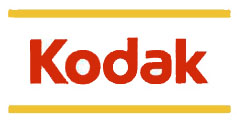Almost any day of the week you will hear me talking about reducing paper output, scanning and shredding paper, and some other less polite ways of eliminating paper from our society.
Today I am going to change tunes for a moment to talk about one specific scenario where keeping paper around is the right thing to do.
Last week, The Winnipeg Foundation, a client I hold near and dear asked me to look at a historical book they had in their possession: a scrapbook, on loan from the family of their first executive director. The treasured book was a collection of congratulations and farewells sent to the former executive director upon his retirement after many years of service to the organization.
The Winnipeg Foundation wanted to keep as close to an original copy of the scrapbook as possible. We were asked if we could scan the pages to have them look as though they were the actual original paper.
Normally we are asked to produce as clean and clear a reproduction as possible.
Trying to keep the “paper” look and feel is not something requested very often.
I knew we had the equipment to safely scan this book without damaging the binding or pages, but I was concerned we wouldn’t be able to give it the feel they were looking for.
It turns out the person actually doing the scanning knew exactly what to do.
As a rule, we don’t review the content of scanned materials other than to approve the quality (our customers deserve their privacy), but this was a bit different. That so many people had taken the time to handwrite or type these generous letters to a retiree had me curious about this man. The notes and letters tell the story of the founding of philanthropy in Winnipeg. This gentleman’s legacy deserves to live on.
With the completion of the scrapbook project, the family and The Winnipeg Foundation now have a digital version they can share with others and keep this legacy alive. Furthermore, if the original scrapbook were ever lost or destroyed, a copy of the contents (in as close to original look and feel) will be around for future generations to appreciate.
As important as keeping historical documents safe, it is equally important to keep them alive. To keep history alive, it must necessarily be communicated.
Historical originals are wonderful treasures. Reproducing these treasures is the safe way to share them.
So go ahead, save those historical document. Just make sure you allow the world to enjoy them too.
~~~~~~~~~~~~~~~~~~~~~~~~~~~~~~~~~~~~~~~~~~~~~~~~~
The Winnipeg Foundation – Canada’s first community foundation – is committed to connecting donors with opportunities to support causes they care about, as well as identifying and responding to the changing needs of our community. What is a community foundation? To find the answer, visit our Frequently Asked Questions.







